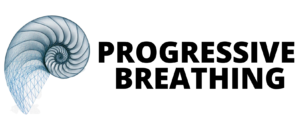How Slow, Deep, Rhythmic Nasal Breathing Improves Attention, Concentration, and Cognitive Function
In today’s fast-paced world, maintaining focus, attention, and mental clarity can be challenging. Prolonged exposure to stress, distractions, and anxiety often diminishes our ability to concentrate and think clearly. While various methods exist to improve cognitive function, one of the most effective yet overlooked tools is slow, deep, rhythmic nasal breathing. This simple practice can significantly enhance brain function, boost cognitive performance, and combat the adverse effects of anxiety, stress, and depression.
The Science Behind Nasal Breathing and Cognitive Function
Unlike mouth breathing, nasal breathing promotes optimal oxygen intake and supports the brain’s energy demands more effectively. The brain consumes nearly 20% of the body’s oxygen, and even slight reductions in oxygen availability can impair cognitive function. Nasal breathing generates nitric oxide in the nasal passages, which improves oxygen absorption and vasodilation (widening of blood vessels). This means more oxygen-rich blood is delivered to the brain, enhancing mental clarity, focus, and concentration.
Nitric oxide also has neuroprotective properties. It helps protect brain cells from oxidative stress and promotes healthy neuronal function, critical for long-term cognitive health. Regular practice of nasal breathing thus helps optimize brain oxygenation, enabling better cognitive performance across tasks requiring problem-solving, attention to detail, and memory.
Nasal Breathing and the Prefrontal Cortex: Enhancing Attention and Focus
The prefrontal cortex (PFC) is the area of the brain responsible for executive functions such as attention, decision-making, and problem-solving. This part of the brain is highly sensitive to stress and anxiety, which can impair its functioning, leading to mental fatigue and poor concentration. Slow, deep nasal breathing activates the parasympathetic nervous system, which counters the body’s stress response, calming the mind and restoring balance to the PFC.
When we are stressed or anxious, our breathing often becomes shallow and rapid, depriving the brain of oxygen and exacerbating cognitive fatigue. However, when we engage in slow, deep breathing, particularly through the nose, we stabilize the body’s CO2 and oxygen levels. This process increases blood flow to the prefrontal cortex, enhancing its function and improving focus, attention span, and mental stamina.
Combatting Anxiety, Stress, and Depression with Nasal Breathing
Anxiety, stress, and depression are often linked to dysregulated breathing patterns, which can further aggravate emotional distress. Mouth breathing, shallow breaths, and rapid breathing commonly occur during periods of heightened stress, activating the sympathetic nervous system (fight or flight) and increasing the release of stress hormones like cortisol and adrenaline.
Slow, deep nasal breathing, however, has the opposite effect. By breathing through the nose and slowing the breath, we stimulate the vagus nerve, which helps activate the parasympathetic nervous system (rest and digest). This reduces the production of stress hormones, promoting relaxation and a sense of calm. Over time, regular nasal breathing practice can help retrain the nervous system, making it more resilient to stress and anxiety.
By engaging in controlled nasal breathing, individuals suffering from anxiety and depression can also balance their heart rate variability (HRV), a key indicator of the body’s ability to manage stress. Higher HRV is associated with better emotional regulation and resilience against anxiety and mood disorders.
Nasal Breathing and the Reduction of Cortisol
Cortisol, the primary stress hormone, is often elevated in individuals dealing with chronic stress or anxiety. High cortisol levels can impair cognitive functions, especially memory and attention, as well as contribute to emotional dysregulation. Studies have shown that slow, deep breathing can lower cortisol levels, especially when practiced regularly over time.
By practicing slow nasal breathing, the body becomes better at managing stress responses, leading to a significant reduction in the symptoms of anxiety, depression, and emotional overwhelm. This allows the brain to shift out of a stress-focused state, freeing cognitive resources for higher-order thinking, creativity, and problem-solving.
Nasal Breathing for Emotional Regulation
Beyond reducing stress hormones, nasal breathing helps regulate emotions by promoting a balanced state of mind. Deep, rhythmic breathing through the nose calms the limbic system. This is responsible for emotional responses such as fear, anxiety, and anger. When the limbic system is overstimulated, it can dominate the prefrontal cortex. Thus, reducing our ability to think clearly and make rational decisions.
Practicing slow nasal breathing encourages a state of mindfulness, bringing attention back to the present moment. This cultivates a sense of inner peace, helping individuals manage emotional turmoil with more ease and reducing the emotional intensity of anxiety and depression.
Nasal Breathing and Brainwave States
Slow, deep nasal breathing influences brainwave states, shifting the brain from high beta states (associated with stress and anxiety) to alpha and theta waves. These states are linked to relaxation, creativity, and focused attention. Alpha waves are often associated with a calm yet alert state of mind, optimal for deep concentration and learning. Theta waves, on the other hand, are connected to deep relaxation and creativity, often accessed during meditation and deep contemplation.
By regularly practicing nasal breathing, individuals can cultivate alpha and theta brainwave states. Thus allowing them to enhance their concentration and productivity while simultaneously reducing stress and anxiety.
Using Nasal Breathing as a Cognitive Tool
Nasal breathing can be easily integrated into daily life as a tool for improving cognitive function and combating stress. Here are a few techniques to start:
- Box Breathing: Inhale through the nose for a count of five, hold for five, exhale for five, and hold again for five. This method is particularly useful for calming the mind and improving focus.
- 4-7-8 Breathing: Inhale deeply through the nose for four counts, hold for seven, and exhale slowly for eight counts. This technique is excellent for reducing anxiety and promoting relaxation.
- Diaphragmatic Breathing: Focus on breathing deeply into the diaphragm rather than shallow breaths into the chest. This increases oxygen intake and stimulates the parasympathetic nervous system.
Summary
Slow, deep, rhythmic nasal breathing is a powerful tool for enhancing cognitive function, extending attention span, and reducing mental fatigue. It not only improves oxygen delivery to the brain but also regulates the nervous system, promoting emotional resilience and reducing the effects of anxiety, stress, and depression. By integrating nasal breathing practices into daily life, individuals can unlock greater mental clarity, focus, and overall well-being.
Read how Somatic Release Breathing can assist your healing process.



